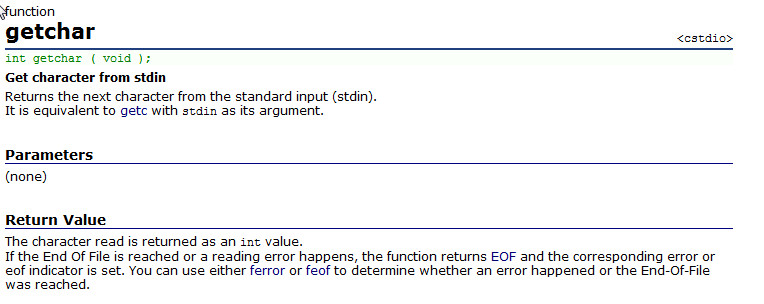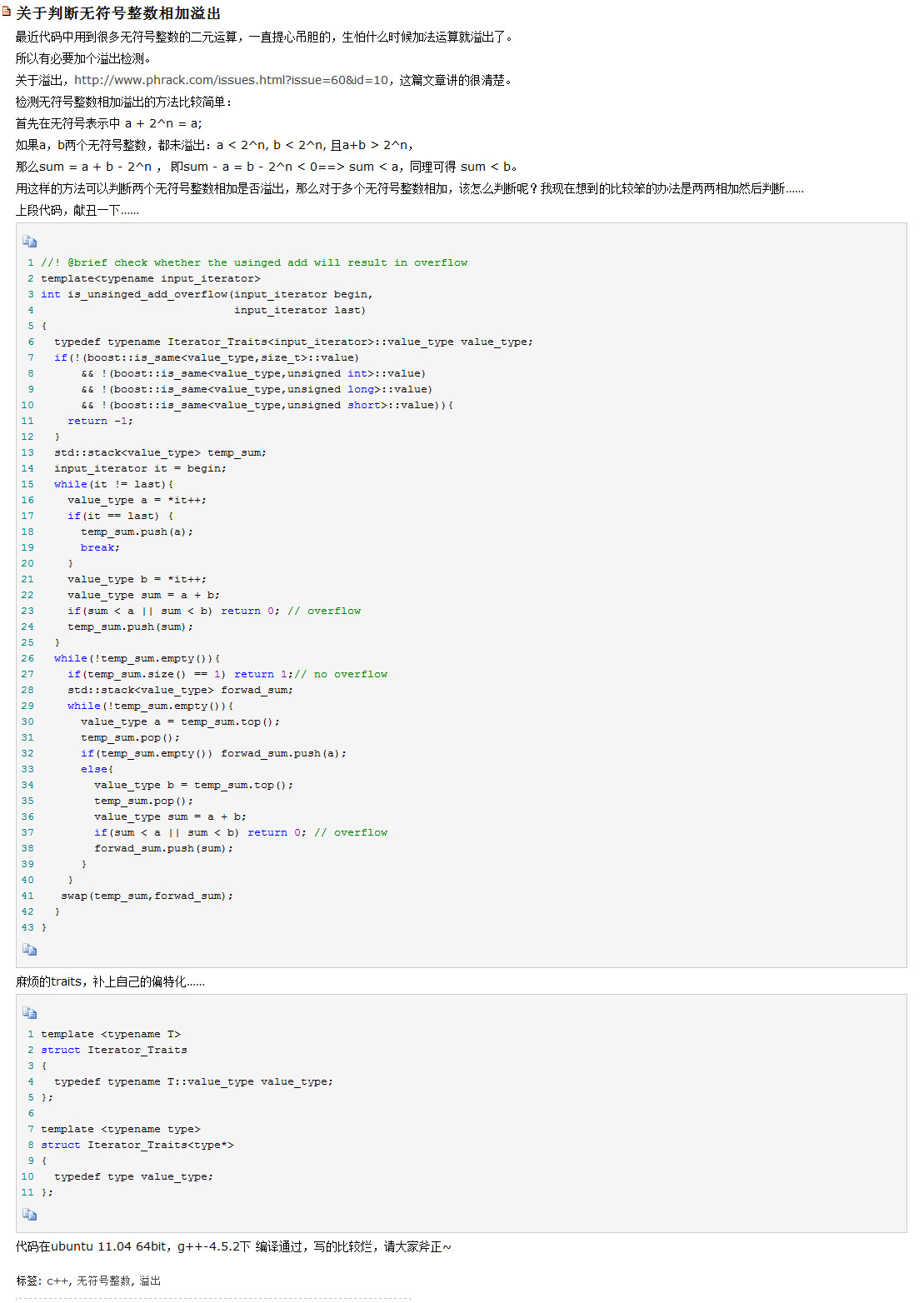еҶҚзЎ®е®ҡеҮәзҺ°й—®йўҳзҡ„еҮҪж•°еQҢиЎҢеҸ?br />еҲҶжһҗеҺҹеӣ
fix
vsдёӯиҝңҪEӢи°ғиҜ•пјҢжҢҮе®ҡipеQҢportеQ?еҗҢж—¶еңЁиҝңҪEӢдё»жңЮZёҠиҰҒеҗҢж„ҸиҝңҪEӢи°ғиҜ•пјҢжҺҘеҸ—жҢҮе®ҡuserгҖӮиҰҒдҝқиҜҒcodeдёҺexeж–ҮдҡgдёҖиҮҙгҖ?br />и®‘Ц®ҡж–ӯзӮ№еQҢи§ӮеҜҹdebugиҫ“е…ҘеQҢдёҺйў„жғізҡ„жңүд»Җд№ҲдёҚеҗҢгҖӮи§ӮеҜҹbtеQҢthread stack жү‘ЦҲ°еҮәзҺ°й—®йўҳзҡ„еҮҪж•°жҲ–иҖ…иЎҢеҸ—чҖ?br />
p4 дёӯзҡ„check out, commit, diff, opened, editеQ?syncе‘ҪдЧoе’ҢдҪңз”ЁгҖ?br />submit stepеQҡmerge changlist (from branch) (to branch)
check diff
resolve
make (so make sure the code is right)
submit (add comments)
set the bug state in Web
vim:зҶҹжӮүдәҶеҗ„ҝUҚе‘Ҫд»ӨгҖ?br />
cscopeеQҢctagеQҡеңЁlinuxдёӯжөҸи§Ҳд»Јз ҒеҫҲжңүз”ЁеQҢеҸҜд»ҘжүҫеҲ°function definition, struct definition, calling function, called function.
еңЁдёҖдёӘзӣ®еҪ•дёӯе»әз«Ӣcscope databaseеQ?еҸҜд»ҘеҶҚдё»зӣ®еҪ•е»әз«ӢеQҢд№ӢеҗҺеҸӘеңЁиҝҷйҮҢдӢЙз”ЁcscopeеQҢе°ұиғҪжүҫеҲ°е…ЁйғЁеј•з”ЁгҖ?br />
linuxеQ?lib ж–Үдҡgзҡ„дӢЙз”ЁгҖ?жң?a е’?oзҡ„libж–ҮдҡgгҖ?br />
2.code style.
ж–Үдҡgе‘ҪеҗҚиҰҒжңүеұӮж¬Ўж„ҹгҖӮдҫӢеҰӮпјҢsnape_webserver_msg.c, snape_webserver_thread.c, snape_webserver_log.c, snape_client_msg.c,,,
еҮҪж•°е‘ҪеҗҚд№ҹиҰҒжңүеұӮӢЖЎж„ҹеQ?дҫӢеҰӮеQҢsnape_webserver_msg_set_connection(), snape_webserver_thread_create(),snape_client_request_get_pic().
еҸҳйҮҸе‘ҪеҗҚд№ҹиҰҒжңүеұӮӢЖЎж„ҹе’Ңж„Ҹд№үгҖ?br />еҮәй”ҷеӨ„зҗҶзҡ„дё“й—ЁеҮҪж•°гҖ?br />debug levelеQҡdebugеQҢinfo, basic, webserver, client,,,
3.еҮҪж•°зҡ„е®ҡд№үдёҺӢ№Ҹи§ҲгҖ?br />call graph definition.
еҮҪж•°еҗҚеӯ—жңҖеҘҪиғҪеӨҹжҳҫҪCәеҮәеҮҪж•°и°ғз”Ёзҡ„graphгҖ?br />дҪҝз”Ёhash table дҝқеӯҳеӨ§йҮҸҫcХdһӢзҡ„ж•°жҚ®гҖ?br />дҪҝз”ЁеҶ…е®№зҡ„md5дҪңдШ“ҳqҷдёӘеҶ…е®№зҡ„idеQҢе°ұеҸҜд»Ҙе®ҢзҫҺй…ҚеҗҲhash tableгҖ?br />
4.threadеQ?process
windows дёӯпјҢ object , event, cs
csеҗҢжӯҘйҖҹеәҰиҫғеҝ«еQҢдҪҶжҳҜдӢЙз”Ёcsе®ТҺҳ“ҳqӣе…ҘdeadlockзҠ¶жҖҒгҖӮеӣ дёәеңЁҪ{үеҫ…ҳqӣе…Ҙcsж—УһјҢж— жі•и®‘Ц®ҡӯ‘…ж—¶еҖ№{Җ?br />дә’ж–ҘеҜ№иұЎдёҺеҶ…ж ёеҜ№иұЎеұһдәҺеҶ…ж ёеҜ№иұЎпјҢеҲ©з”ЁеҶ…ж ёеҜ№иұЎҳqӣиЎҢҫUҝзЁӢеҗҢжӯҘеQҢеҗҢжӯҘйҖҹеәҰиҫғж…ўеQҢдҪҶҳqҷз§Қж–№ејҸеҸҜеңЁеӨҡдёӘҳqӣзЁӢзҡ„еҗ„дёӘеҜ№иұЎд№Ӣй—ҙиҝӣиЎҢеҗҢжӯҘгҖ?br />eventеҲҶдШ“дәәе·ҘйҮҚзҪ®дёҺиҮӘеҠЁйҮҚҫ|®дәӢд»УһјҢдёӨиҖ…еңЁҫlҶиҠӮдёҠпјҢдёҚеҗҢгҖ?br />
5.cache implementation
clientз«ҜеҸҜд»ҘдӢЙз”Ёзұ»дјјosдёӯпјҢcache дё?иҷҡжӢҹеҶ…еӯҳзҡ„ж–№жі•гҖӮb_modifiedиЎЁзӨәжҳҜеҗҰҫlҸиҝҮжӣҙж”№еQҢд»ҺиҖҢжҳҜеҗҰйңҖиҰҒжӣҙж–°гҖӮжҜҸӢЖЎеҸӘеҺАLӢҝж–°зҡ„дёңиҘҝгҖ?br />иҖҢеңЁserverз«ҜпјҢеҸҜд»ҘдҪҝз”ЁеҶ…е®№зҡ„MD5еҲӨж–ӯжҳҜеҗҰйңҖиҰҒеӨ„зҗҶжқҘеҲ°зҡ„еҶ…е®№еQҢеҸҜд»Ҙз”ЁеӨҡеұӮӢЖЎзҡ„MD5жқҘжӣҙеҠ еҺ»improve performanceгҖӮдҫӢеҰӮз”ЁжҖЦMҪ“зҡ„md5еQҢе’Ңеҗ„дёӘйғЁеҲҶзҡ„md5.
е…ҲеҲӨж–ӯжҖЦMҪ“MD5еQҢеҰӮжһңж”№еҸҳпјҢеңЁеҺ»ӢӮҖжҹҘйғЁеҲҶmd5.еҰӮжһңжІЎжңүж”№еҸҳеQҢе°ұж•ҙдёӘйғҪеҸҜд»ҘдёўејғпјҢдёҚеҺ»еӨ„зҗҶгҖ?br />design is very important. д»Јз Ғзҡ„жү§иЎҢиҝҮҪEӢиҰҒе®Ңе…Ёдҫқиө–designгҖ?br />
6.select function
ејӮжӯҘselectеQ?еҸҜд»Ҙи®©зәҝҪEӢдёҚеҺ»busy waitingгҖ?br />дҪҶжҳҜеҰӮжһңйңҖиҰҒдј иҫ“еҶ…е®№пјҢйңҖиҰҒtrigger signalеQҢи®©е®ғдёҚз”ЁзӯүеҲ°timeoutеQҢе°ұиғҪеҸ‘йҖҒж•°жҚ®гҖ?br />
7.timestamp/timeout/ ts_diff
еҸҜд»Ҙз”Ёts_diffеҺХdҗҢжӯҘж—¶й—ҙгҖ?br />дҪҝз”ЁtimeoutжқҘйҳІжӯўд“Qж„Ҹж“ҚдҪңзҡ„ж— йҷҗеҲ¶зӯүеҫ?br />дҪҝз”ЁtimestampжқҘеҶіе®ҡе“ӘдёҖдёӘжӣҙж–°гҖӮдёҚиҰҒз”ЁcounterгҖӮпјҲж— жі•еҗҢжӯҘеQҢж— жі•жҺ§еҲ¶еҚ•дёҖжҖ§пјү
8.xml api
еңЁдј йҖҒж•°жҚ®ж–№йқўпјҢеҸҜд»ҘдҪҝз”Ёxml
9.performace/memory usage
mm tools.
unsigned int u = 1234;
int i = -5678;
unsigned int result = u + i;
What implicit conversions are going on here, and is this code safe for all values of u and i? (Safe, in the sense that even though result in this example will overflow to some huge positive number, I could cast it back to an int and get the real result.)
Answer:
Short Answer
Your i will be converted to an unsigned integer by adding UINT_MAX + 1, then the addition will be carried out with the unsigned values, resulting in a large result (depending on the values of u andi).
Long Answer
According to the C99 Standard:
6.3.1.8 Usual arithmetic conversions
- If both operands have the same type, then no further conversion is needed.
- Otherwise, if both operands have signed integer types or both have unsigned integer types, the operand with the type of lesser integer conversion rank is converted to the type of the operand with greater rank.
- Otherwise, if the operand that has unsigned integer type has rank greater or equal to the rank of the type of the other operand, then the operand with signed integer type is converted to the type of the operand with unsigned integer type.
- Otherwise, if the type of the operand with signed integer type can represent all of the values of the type of the operand with unsigned integer type, then the operand with unsigned integer type is converted to the type of the operand with signed integer type.
- Otherwise, both operands are converted to the unsigned integer type corresponding to the type of the operand with signed integer type.
In your case, we have one unsigned int (u) and signed int (i). Referring to (3) above, since both operands have the same rank, your i will need to be converted to an unsigned integer.
6.3.1.3 Signed and unsigned integers
- When a value with integer type is converted to another integer type other than _Bool, if the value can be represented by the new type, it is unchanged.
- Otherwise, if the new type is unsigned, the value is converted by repeatedly adding or subtracting one more than the maximum value that can be represented in the new type until the value is in the range of the new type.
- Otherwise, the new type is signed and the value cannot be represented in it; either the result is implementation-defined or an implementation-defined signal is raised.
Now we need to refer to (2) above. Your i will be converted to an unsigned value by adding UINT_MAX + 1. So the result will depend on how UINT_MAX is defined on your implementation. It will be large, but it will not overflow, because:
6.2.5 (9)
A computation involving unsigned operands can never overflow, because a result that cannot be represented by the resulting unsigned integer type is reduced modulo the number that is one greater than the largest value that can be represented by the resulting type.
Bonus: Arithmetic Conversion Semi-WTF
#include <stdio.h>
int main(void)
{
unsigned int plus_one = 1;
int minus_one = -1;
if(plus_one < minus_one)
printf("1 < -1");
else
printf("boring");
return 0;
}
You can use this link to try this online: http://codepad.org/yPhYCMFO
Bonus: Arithmetic Conversion Side Effect
Arithmetic conversion rules can be used to get the value of UINT_MAX by initializing an unsigned value to -1, ie:
unsigned int umax = -1; // umax set to UINT_MAX
This is guaranteed to be portable regardless of the signed number representation of the system because of the conversion rules described above. See this SO question for more information: Is it safe to use -1 to set all bits to true?
ANSI Cж ҮеҮҶеҸӘдҝқиҜҒдәҶCе®һзҺ°еҝ…йЎ»иғҪеӨҹеҢәеҲ«еҮәеүҚ6дёӘеӯ—ҪWҰдёҚеҗҢзҡ„еӨ–йғЁеҗҚз§°гҖӮиҖҢдё”ҳqҷдёӘе®ҡд№үдёӯеЖҲжІЎжңүеҢәеҲҶеӨ§еҶҷеӯ—жҜҚдёҺе…¶еҜ№еә”зҡ„е°ҸеҶҷеӯ—жҜҚгҖ?/span>
еӣ жӯӨеQҢзј–еҶҷеҸҜҝUАLӨҚҪEӢеәҸеҝ…йЎ»һ®ҸеҝғҳqҷдёҖзӮҸVҖ?br />
2.еӯ—з¬ҰжҳҜжңүҪWҰеҸ·зҡ„ж•ҙж•ҺНјҢҳqҳжҳҜж— з¬ҰеҸпLҡ„ж•ҙж•°
еҸӘжңүжҠҠдёҖдёӘеӯ—ҪWҰеҖЖDқ{жҚ?span style="color: red; ">дёЮZёҖдёӘиҫғеӨ§зҡ„ж•ҙж•°ж—УһјҢжүҚйҮҚиҰҒгҖӮеңЁе…¶д»–жғ…еҶөдёӢпјҢҫl“жһңйғҪжҳҜеQҡеӨҡдҪҷзҡ„дҪҚиў«ҪҺҖеҚ•зҡ„“дёўејғ”гҖ?br />
еңЁиқ{жҚўиҝҮҪEӢдёӯеQҡеә”иҜҘе°Ҷеӯ—з¬ҰдҪңдШ“жңүз¬ҰеҸдh•°ҳqҳжҳҜж— з¬ҰеҸдh•°еQ?br />еҰӮжһңжңүз¬ҰеҸшPјҢҫ~–иҜ‘еҷЁе°Ҷcharж•°жҚ®еQҢжү©еұ•еҲ°intж—¶еҖҷпјҢеә”иҜҘеӨҚеҲ¶ҪWҰеҸ·дҪҚгҖ?br />еҰӮжһңж— з¬ҰеҸшPјҢҫ~–иҜ‘еҷЁеҸӘйңҖеңЁеӨҡдҪҷзҡ„дҪҚдёҠеЎ«е……0.
int main()
{
char c='a';
c=c+40;
// printf("%c\n", -1);
printf("c %d\n", c);
printf("unsigned c %u\n", (unsigned char)c);
}
unsigned c 137
еҰӮжһңҫ~–зЁӢиҖ…е…іжіЁдёҖдёӘжңҖй«ҳдҪҚжҳ?зҡ„еӯ—ҪWҰжҳҜжӯЈиҝҳжҳҜиҙҹеQҢеҸҜд»Ҙи®ҫҫ|?span style="color: red; ">дёәж— ҪWҰеҸ·еӯ—з¬Ұж•?/span>гҖӮиҝҷж дhүҖжңүзј–иҜ‘еҷЁйғҪдјҡиҪ¬жҚўдёәж•ҙж•°ж—¶еҖҷпјҢеЎ«е……дё?.
3.дёҖдёӘеёёи§Ғй”ҷиҜҜжҳҜеQҡеҰӮжһңcжҳҜдёҖдёӘеӯ—ҪWҰеҸҳйҮҸпјҢдҪҝз”ЁеQҲunsignedеQүcеҸҜд»Ҙеҫ—еҲ°дёҺcҪ{үдӯhзҡ„ж— ҪWҰеҸ·ж•ҙж•°гҖ?span style="color: red; ">ҳqҷжҳҜдјҡеӨұиҙҘзҡ„гҖӮеӣ дёәеңЁһ®ҶcиҪ¬жҚўдёәж— ҪWҰеҸ·ж•ҙж•°ж—¶еҖҷпјҢcһ®ҶйҰ–е…ҲйҰ–е…Ҳиў«иҪ¬жҚўдёәintеһӢж•ҙж•°гҖӮиҖҢжӯӨж—¶еҸҜиғҪеҫ—еҲ°йқһйў„жңҹзҡ„з»“жһңгҖ?br />жӯЈзЎ®ж–ТҺі•жҳ?/span>еQ?unsigned char )cеQҢзӣҙжҺҘиҝӣиЎҢиқ{жҚўгҖ?br />
дҫӢеҰӮдёҠдёӘдҫӢеӯҗдёӯпјҢжңҖеҗҺдёҖеҸҘж”№дё?
йӮЈд№Ҳҫl“жһңжҳ?
unsigned c 4294967177
4.ҝUЦMҪҚҳqҗз®—ҪW?br /> 1.еҗ‘еҸіҝUЦMҪҚж—УһјҢҪIәеҮәзҡ„дҪҚз”?еЎ«е……еQҢиҝҳжҳҜз”ұҪWҰеҸ·дҪҚзҡ„еүҜжң¬еЎ«е……гҖ?br /> 2.еҰӮжһңжҳҜж— ҪWҰеҸ·ж•ҺНјҢз”?еЎ«е……гҖӮеҰӮжһңжҳҜжңүз¬ҰеҸдh•°еQҢж—ўеҸҜд»Ҙз”?д№ҹеҸҜд»Ҙз”ЁҪWҰеҸ·дҪҚзҡ„еүҜжң¬гҖӮпјҲеҰӮжһңе…ПxіЁеҸіз§»ж—¶еҖҷз©әеҮәзҡ„дҪҚпјҢеҸҜд»ҘеЈ°жҳҺдёәж— ҪWҰеҸ·ҫcХdһӢеQҢйӮЈд№Ҳз©әеҮәзҡ„дҪҚйғҪдјҡиў«и®„ЎҪ®дё?еQ?br />
еҰӮжһң被移дҪҚеҜ№иұЎдШ“nдҪҚпјҢйӮЈд№ҲҝUЦMҪҚи®Ўж•°еҝ…йЎ»еӨ§дәҺжҲ–зӯүдә?еQҢиҖҢдёҘж је°ҸдәҺn.
еҚідӢЙCе®һзҺ°һ®Ҷз¬ҰеҸ·дҪҚеӨҚеҲ¶еҲ°з©әеҮәзҡ„дҪҚдёӯеQҢжңүҪWҰеҸ·ж•°зҡ„еҗ‘еҸіҝUЦMҪҚеQ?span style="color: red; ">д№ҹеЖҲдёҚзӯүдәҺйҷӨд»?зҡ„жҹҗӢЖЎе№ӮгҖӮдҫӢеҰӮпјҲ-1еQ?gt;>1ҫl“жһңдё?1еQҢиҖҢдёҚжҳ?1/2 == 0
5.йҡҸжңәж•°жңҖеӨ§еҖы|јҢRAND_MAXеңЁlimitsдёӯе®ҡд№үгҖӮжҲ‘Ӣ№ӢиҜ•ҫl“жһңҪ{үдәҺINT_MAX
6.йҷӨжі•ҳqҗз®—зҡ„жҲӘж–?br />q=a/b;
r=a%b;
еҒҮе®ҡb>0.
CиҜӯиЁҖе®ҡд№үеҸӘдҝқиҜҒq*b+r=a,д»ҘеҸҠa>=0 дё?b>0ж—УһјҢдҝқиҜҒ|r|<|b|д»ҘеҸҠr>=0.
еQҲеҰӮжһңa<0, йӮЈд№Ҳrд№ҹеҸҜиғҪе°Ҹдә?еQ?/span>
дҫӢеҰӮеQ?br />
// Start typing your code here

cout<<(-3)/2<<endl;
return 0;
}
еQ?йҒҝе…ҚеҮҪж•°и°ғз”ЁејҖй”ҖгҖ?br />
3.е®Ҹе®ҡд№үжіЁж„ҸзӮ№
1.дёҚиғҪеҝҪи§Ҷе®ҡд№үдёӯзҡ„ҪIәж ј
2.жңҖеҘҪе°Ҷе®Ҹе®ҡд№үдёӯжҜҸдёӘеҸӮж•°йғҪз”ЁжӢ¬еҸ·жӢ¬и“vжқҘгҖӮж•ҙдёӘиЎЁиҫ‘ЦјҸзҡ„з»“жһңйЎөз”ЁжӢ¬еҸдhӢ¬иөдhқҘгҖ?br /> 3.јӢ®дҝқи°ғз”Ёе®Ҹзҡ„еҸӮж•°дёӯпјҢдёҚеӯҳеңЁжңүеүҜдҪңз”Ёзҡ„д»Јз Ғ
4.assertе®ҸгҖӮеҸҜд»ҘеңЁеҮәй”ҷдҝЎжҒҜдёӯеҢ…еҗ«ж–Ү件еҗҚе’Ңж–ӯӯaҖеӨЮpУ|еӨ„зҡ„иЎҢеҸ·гҖӮеҫҲжңүз”ЁгҖ?br />
5.е®ҸеЖҲдёҚжҳҜҫcХdһӢе®ҡд№үгҖ?br />#define T1 struct foo *
typedef struct foo * T2;
T1 a,b; //struct foo * a, b;
T2 a,b; //a ,bйғҪжҳҜжҢҮеҗ‘ҫl“жһ„зҡ„жҢҮй’ҲгҖ?img src ="http://www.shnenglu.com/chenglong7997/aggbug/180104.html" width = "1" height = "1" />

getcharҳq”еӣһж•ҙеЕһ
int main()
{
char c;
while( (c=getchar())!=EOF )
putchar(c);
}
еә”иҜҘһ®ҶcеЈ°жҳҺдёәintгҖӮеҗҰеҲҷпјҢcеҸҜиғҪж— жі•е®№дёӢEOF
2.жӣҙж–°ж–Үдҡg
иҜАL“ҚдҪңд№ӢеҗҺпјҢж–ҮдҡgжҢҮй’ҲдјҡеҒҸҝUЦMёҖҢDьcҖӮиҝҷж—¶еҖҷпјҢи®Іж–Ү件жӣҙж–°еҗҺеQҢеҶҷе…Ҙжәҗж–Үдҡgд№ӢеүҚеQҢеә”иҜҘfseekи®Іж–Ү件жҢҮй’Ҳи°ғеӣһеҺ»гҖ?br />
3.дҪҝз”Ёsetbufи®„ЎҪ®иҫ“еҮәзҡ„зј“еҶІеҢәеӨ§е°ҸгҖӮеҸҜд»ҘжҳҜstdoutе’Ңfile
4.жӯЈзЎ®дҪҝз”ЁerrnoӢӮҖӢ№Ӣй”ҷиҜ?br />errno=0;
/*и°ғз”Ёеә“еҮҪж•?/
if(ҳq”еӣһзҡ„й”ҷиҜҜеҖ? //ҳqҷдёӘй”ҷиҜҜеҖјеҸҜиғҪдёҚжҳҜз”ұеҪ“еүҚҳqҷдёӘеҮҪж•°еј•и“vзҡ„гҖӮиҖҢжҳҜз”ұеҪ“еүҚеҮҪж•ҺНјҢеҸҲи°ғз”Ёзҡ„еҸҰеӨ–дёҖдёӘеҮҪж•°еј•иөпLҡ„гҖ?br /> ӢӮҖжҹҘerrno;
5.signalеӨ„зҗҶеҮҪж•°е”ҜдёҖе®үе…ЁеQҢеҸҜҝUАLӨҚзҡ„ж“ҚдҪңе°ұжҳҜжү“еҚоCёҖжқЎй”ҷиҜҜдҝЎжҒҜпјҢ然еҗҺдҪҝз”ЁlongjmpжҲ–иҖ…exitз«ӢеҚійҖҖеҮәзЁӢеәҸгҖ?br />
2.extern int n;
еңЁдёӨеӨ–дёҖдёӘж–Ү件дёӯеQ?long nеQ?br />ҳqҷжҳҜдёҖдёӘж— ж•Ҳзҡ„ҪEӢеәҸеQҢеӣ дёәеҗҢдёҖдёӘеӨ–йғЁеҸҳйҮҸеҗҚеңЁдёӨдёӘдёҚеҗҢзҡ„ж–Үдҡgдёӯиў«еЈ°жҳҺдёЮZёҚеҗҢзҡ„ҫcХdһӢгҖӮ然еҗҺеӨ§еӨҡж•°cиҜӯиЁҖе®һзҺ°дёҚиғҪӢӮҖӢ№ӢеҮәҳqҷз§Қй”ҷиҜҜгҖ?br />
3.дёҖдёӘзЁӢеәҸз”ұеӨҡдёӘжЁЎеқ—ҫl„жҲҗеQҢжҜҸдёӘжЁЎеқ—йғҪйңҖиҰҒзҹҘйҒ“дёҖдёӘзү№е®ҡзҡ„ж–ҮдҡgеҗҚгҖӮжҲ‘们еёҢжңӣиғҪеӨҹеҒҡеҲ°еҸӘеңЁдёҖеӨ„ж”№еҠЁиҝҷдёӘж–Ү件еҗҚеQҢжүҖжңүжЁЎеқ—дёӯзҡ„ж–Ү件еҗҚһ®ЮpғҪеҗҢж—¶еҫ—еҲ°жӣҙж–°гҖ?br />еҸҜд»ҘеQҢе…ҲеҲӣеҫҸдёҖдёӘж–Үд»УһјҢеҸ«еҒҡfile.hеQҢе®ғеҢ…еҗ«дәҶеЈ°жҳ?span style="color: red; ">extern char filename[];
йңҖиҰҒз”ЁеҲ°еӨ–йғЁеҜ№иұЎfilenameзҡ„жҜҸдёӘcжәҗж–Үд»үҷғҪеә”иҜҘеҠ дёҠеQ?#include "file.h"еQ?br />жңҖеҗҺйҖүжӢ©дёҖдёӘCжәҗж–Үд»УһјҢеңЁе…¶дёӯз»ҷеҮәfilenameзҡ„еҲқе§ӢеҖ№{ҖӮеҰӮеңЁfile.cдё?br />#include "file.h";
char filename[]="/etc/passwd";
ҳqҷж ·һ®ЧғҝқиҜҒдәҶfilenameзҡ„зұ»еһӢжҳҜжӯЈзЎ®зҡ„гҖӮи§ЈеҶідәҶ2дёӯзҡ„й—®йўҳгҖ?img src ="http://www.shnenglu.com/chenglong7997/aggbug/180101.html" width = "1" height = "1" />
cиҜӯиЁҖдёӯеӯҳеңЁдёӨҫcАL•ҙж•°з®—жңҜиҝҗҪҺ—пјҢжңүз¬ҰеҸҜӮҝҗҪҺ—е’Ңж— з¬ҰеҸҜӮҝҗҪҺ—гҖ?span style="color: #ff00ff; ">еңЁж— ҪWҰеҸ·ҳqҗз®—йҮҢпјҢжІЎжңүдәҶз¬ҰеҸ·дҪҚеQҢжүҖд»ҘжҳҜжІЎжңүжәўеҮәзҡ„жҰӮеҝлҠҡ„гҖ?/p>
жүҖжңүзҡ„ж— з¬ҰеҸ?span style="color: red; ">ҳqҗз®—йғҪжҳҜд»?зҡ„nӢЖЎж–№дёәжЁЎгҖӮеҰӮжһңз®—жңҜиҝҗҪҺ—з¬Ұзҡ„дёҖдёӘж“ҚдҪңж•°жҳҜжңүҪWҰеҸ·д№ҰпјҢеҸҰдёҖдёӘжҳҜж— з¬ҰеҸдh•°еQҢйӮЈд№ҲжңүҪWҰеҸ·ж•?/p>
дјҡиў«иҪ¬жҚўдёәж— ҪWҰеҸ·ж•?/span>(иЎЁзӨәиҢғеӣҙһ®Ҹзҡ„жҖАLҳҜиў«иқ{жҚўдШ“иЎЁзӨәиҢғеӣҙеӨ§зҡ„)еQҢйӮЈд№ҲжәўеҮЮZ№ҹдёҚдјҡеҸ‘з”ҹгҖӮдҪҶжҳҜпјҢеҪ“дёӨдёӘж“ҚдҪңж•°йғҪжҳҜжңүз¬ҰеҸдh•°
ж—УһјҢжәўеҮәһ®ұжңүеҸҜиғҪеҸ‘з”ҹгҖӮиҖҢдё”жәўеҮәзҡ„з»“жһңжҳҜжңӘе®ҡд№үзҡ„гҖ?span style="color: red; ">еҪ“дёҖдёӘиҝҗҪҺ—зҡ„ҫl“жһңеҸ‘з”ҹжәўеҮәж—УһјҢд»ЦMҪ•еҒҮи®ҫйғҪжҳҜдёҚе®үе…Ёзҡ„гҖ?/span>
дҫӢеҰӮеQҢеҒҮе®ҡaе’ҢbжҳҜдёӨдёӘйқһиҙҹзҡ„ж•ҙеһӢеҸҳйҮҸ(жңүз¬ҰеҸ?еQҢжҲ‘们йңҖиҰҒжЈҖжҹҘa+bжҳҜеҗҰжәўеҮәеQҢдёҖҝUҚжғіеҪ“然зҡ„ж–№ејҸжҳҜ:
if (a + b < 0)
жәўеҮәеQ?/p>
е®һйҷ…дёҠпјҢеңЁзҺ°е®һдё–з•ҢйҮҢеQҢиҝҷтq¶дёҚиғҪжӯЈеёёиҝҗиЎҢгҖӮеҪ“a+bјӢ®е®һеҸ‘з”ҹжәўеҮәж—УһјҢжүҖжңүе…ідәҺз»“жһңеҰӮдҪ•зҡ„еҒҮи®ҫеқҮдёҚеҸҜйқ гҖӮжҜ”еҰӮпјҢеңЁжҹҗдә?/p>
жңәеҷЁзҡ„cpuеQҢеҠ жі•иҝҗҪҺ—е°Ҷи®„ЎҪ®дёҖдёӘеҶ…йғЁеҜ„еӯҳеҷЁдёәеӣӣҝUҚзҠ¶жҖ?жӯЈпјҢиҙҹпјҢйӣ¶е’ҢжәўеҮәгҖӮеңЁҳqҷз§ҚжңәеҷЁдёҠпјҢcҫ~–иҜ‘еҷЁе®Ңе…ЁжңүзҗҶз”ұе®һзҺ°д»ҘдёҠ
зҡ„дҫӢеӯҗпјҢдҪҝеҫ—a+bҳq”еӣһзҡ„дёҚжҳҜиҙҹеQҢиҖҢжҳҜҳqҷдёӘеҶ…еӯҳеҜ„еӯҳеҷЁзҡ„жәўеҮәзҠ¶жҖҒгҖӮжҳҫз„УһјҢifзҡ„еҲӨж–ӯдјҡеӨЮpУ|гҖ?/p>
дёҖҝUҚжӯЈјӢ®зҡ„ж–№ејҸжҳҜе°Ҷaе’ҢbйғҪејәеҲ¶иқ{жҚўдШ“ж— з¬ҰеҸдh•ҙж•ҺНјҡ
if ( (unsigned)a + (unsigned)b > INT_MAX)
жәўеҮә;
ҳqҷйҮҢзҡ„int_maxеҖйgШ“жңүз¬ҰеҸдh•ҙеһӢзҡ„жңҖеӨ§еҖ№{ҖӮеңЁдёҖиҲ¬зҡ„ҫ~–иҜ‘еҷЁйҮҢжҳҜдёҖдёӘйў„е®ҡд№үзҡ„еёёйҮҸгҖӮANSI CеңЁlimitsйҮҢе®ҡд№үдәҶINT_MAXеQҢеҖйgШ“
2зҡ?1ӢЖЎж–№-1.
дёҚйңҖиҰҒз”ЁеҲ°ж— ҪWҰеҸ·ҪҺ—ж•°ҳqҗз®—зҡ„еҸҰдёҖҝUҚеҸҜиЎҢж–№жі•жҳҜеQ?/p>
if (a > INT_MAX - b )
жәўеҮәеQ?nbsp;

еӣ жӯӨеQҢint *p=a; //right
int *p=&a; //error, (&aе·Із»ҸжҳҜдёҖдёӘжҢҮеҗ‘ж•ҙдёӘж•°ҫl„зҡ„жҢҮй’Ҳ)
2.дёәmainеҮҪж•°жҸҗдҫӣҳq”еӣһеҖ?br />mainеQҲпјү
{}
йҡҗеҗ«зқҖmainҳq”еӣһж•ҙж•°еQ?span style="color: red; ">дёҖдёӘиҝ”еӣһж•ҙж•°зҡ„еҮҪж•°еҰӮжһңҳq”еӣһеӨЮpУ|еQҢе®һйҷ…дёҠйҡҗеҗ«ҳq”еӣһжҹҗдёӘ“еһғеңҫ”ж•ҙж•°еQҢеҸӘиҰҒиҜҘеҖйgёҚиў«з”ЁеҲҺНјҢһ®ұж— е…ізҙ§иҰҒгҖ?br />然иҖҢпјҢеңЁжҹҗдәӣжғ…еҶөдёӢеQҢmainзҡ„иҝ”еӣһеҖјеҚҙтqүҷқһж— е…ізҙ§иҰҒеQҢеӨ§еӨҡж•°CиҜӯиЁҖе®һзҺ°йҖҡиҝҮmainзҡ„иҝ”еӣһеҖы|јҢжқҘе‘ҠзҹҘж“ҚдҪңзі»ҫlҹиҜҘеҮҪж•°зҡ„жү§иЎҢжҳҜжҲҗеҠҹҳqҳжҳҜеӨ?/span>иҙ?/span>гҖӮеҰӮжһңдёҖдёӘзЁӢеәҸзҡ„mainеҮҪж•°тq¶дёҚҳq”еӣһд»ЦMҪ•еҖы|јҢйӮЈд№ҲжңүеҸҜиғҪзңӢдёҠеҺ»жү§иЎҢеӨЮpУ|гҖӮжүҖд»ҘжңҖеҘҪжҸҗдҫӣиҝ”еӣһеҖ?br />
3.иҫ№з•Ңи®Ўз®—дёҺдёҚеҜ№з§°иҫ№з•ҢгҖ?br />йҖӮеҗҲcдёӯд»ҘдёӢж Үдё?ејҖе§Ӣзҡ„и®Ўз®—гҖ?/span>
/*дјҡиў«еҪ“еҒҡжіЁйҮҠзҡ„ејҖе§ӢгҖӮеә”иҜҘy=x / *p;
жҲ–иҖ…y = x/(*p);
2.еҰӮжһңдёҖдёӘж•ҙеҪўеёёйҮҸ第дёҖдёӘеӯ—ҪWҰдШ“ж•°еӯ—0.йӮЈд№ҲҳqҷдёӘеё”RҮҸдјҡиў«еҪ“еҒҡ8ҳqӣеҲ¶ж•°гҖ?img src ="http://www.shnenglu.com/chenglong7997/aggbug/179858.html" width = "1" height = "1" />